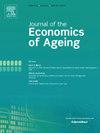Households’ heterogeneous welfare effects of using home equity for life cycle consumption
IF 2
3区 经济学
Q2 DEMOGRAPHY
引用次数: 0
Abstract
Using a life-cycle model and a representative sample of households, we analyze the extent to which using home equity leads to (heterogeneity in) welfare gains over the life cycle. The most policy-feasible option to borrow against 50% of home equity over the life cycle leads to median (average) welfare gains of 7% (11%). However, we find substantial heterogeneity with half of the households facing a welfare gain between 3% and 13%. Much of this heterogeneity is explained by heterogeneity in households’ income and (housing) wealth and less so by heterogeneity in their demographics or preferences for consumption smoothing and time.
家庭利用房屋净值进行生命周期消费的异质性福利效应
利用生命周期模型和具有代表性的家庭样本,我们分析了使用房屋净值在多大程度上会导致生命周期中福利收益的(异质性)增加。在整个生命周期中,最可行的政策方案是利用 50%的房屋净值借款,这将带来 7%(11%)的福利收益中位数(平均值)。然而,我们发现了巨大的异质性,半数家庭的福利收益在 3% 到 13% 之间。这种异质性在很大程度上是由于家庭收入和(住房)财富的异质性造成的,而其人口统计学或消费平滑和时间偏好的异质性则较小。
本文章由计算机程序翻译,如有差异,请以英文原文为准。
求助全文
约1分钟内获得全文
求助全文
来源期刊

Journal of the Economics of Ageing
Multiple-
CiteScore
4.10
自引率
4.50%
发文量
46
审稿时长
49 days
期刊介绍:
The Journal of the Economics of Ageing (JEoA) is an international academic journal that publishes original theoretical and empirical research dealing with the interaction between demographic change and the economy. JEoA encompasses both microeconomic and macroeconomic perspectives and offers a platform for the discussion of topics including labour, health, and family economics, social security, income distribution, social mobility, immigration, productivity, structural change, economic growth and development. JEoA also solicits papers that have a policy focus.
 求助内容:
求助内容: 应助结果提醒方式:
应助结果提醒方式:


